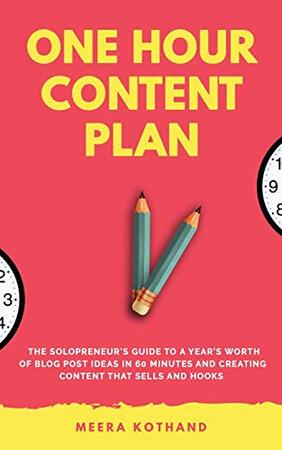Table of Contents
Online content creation may be a bit tricky at the start. Many people start creating online content for various purposes but don’t get the desired results they were hoping for. To take advantage of content creation as a tool to grow your business, you need to know the basics and have a proper strategy.
In general content creation refers to the process of producing various forms of media content for specific purposes. It could involve inspiring, educating, persuading, convincing, supporting or expressing ideas to the audience. The types of content are diverse and include written, spoken, video, audio and more.
Creating content closely aligns with content marketing. It involves creating content that resonates with the target audience and supports business objectives. The content is tailored to specific personas, funnel stages and key performance indicators (KPIs), ensuring it serves strategic purposes.
In the following section, we will explore some of the popular types of online content creation. By incorporating these tips and following the 5-step of online content creation process (Ideation, Planning, Creation, Editing and Promoting), you’ll produce impactful content that aligns with your business goals. Embrace these strategies and you’ll be well on your way to creating content that resonates with your audience and drives meaningful results.
Varieties of Content
Beyond catering to various funnel stages, it’s crucial to diversify your content types. Here are some common forms of online content creation in marketing:
SEO Content
SEO content creation involves crafting articles and web pages with targeted keywords. By optimizing on-page elements, you increase the likelihood of Google presenting your page in relevant searches, thus attracting your audience’s clicks. This type of content is crucial for driving organic traffic to your website.
Blog Content
Creating blog content revolves around crafting long-form, high-quality articles with targeted keywords. The aim is to rank for these keywords, driving qualified traffic to your website, establishing your expertise and building trust with potential customers. Additionally, blog posts can be utilized to share product updates, service information as well as offering insights into your brand’s culture and values.
Social Media Content
Social media content creation is equally vital, though less reliant on keywords and more focused on appearance and delivery. The best social media posts are visually appealing, easily digestible and infused with personality. Remember that each platform requires a tailored approach. This means that great content for Facebook may differ from that on Instagram, LinkedIn, TikTok or Reddit.
Incorporating these various content creation strategies will enhance your marketing efforts and engage your audience across multiple platforms effectively.
Video Content
Video content creation spans a wide range of formats, from hour-long webinars to brief three-minute explainer videos and even 30-second TV commercials or 6-second bumper ads on platforms like YouTube. Utilizing diverse video types, such as silent slideshow-style ads on Facebook, ensures engaging and varied content for your audience. Though resource-intensive, there are tips available to create video ads on a budget without compromising quality.
Other forms of Content
Numerous other forms of content creation exist. This includes website content, email content, ebooks and guides, webinars, sales enablement materials and audio content.
content creation Steps
By following these steps, content marketers can produce compelling and targeted material tailored to their audience’s needs. To ensure accountability for yourself and others, consider establishing timelines for your online content creation process. Creating great content follows a general process:
- Ideation: Generating content ideas can be achieved through keyword research, analyzing website and social media analytics, consulting sales and support teams for FAQs, conducting competitive research and gathering feedback through surveys.
- Planning: Creating content effectively requires planning and preparation. Outline the key elements of the content to ensure it aligns with the title and purpose.
- Creation: This phase involves populating outlines and lists with content. Don’t be afraid to go freely during this stage; you can always pare down later. For blog posts, you might even end up generating enough material to produce multiple posts within a topic cluster.
- Editing: In this stage, review your content to ensure it is clear, concise, grammatically correct and on track with the intended topic and goal. Depending on your team size, there may be multiple phases within the editing process. Remember, done is better than perfect—updates and improvements can always be made later.
- Promoting: After creating your content and editing, it’s time to distribute your content across multiple channels, including your website, emails and social media platforms. Don’t hesitate to resurface the same content periodically, as your audience is continually growing. Internal sharing among your team can also amplify your reach, particularly for B2B teams.
Essential points to consider
- Identify the Who and Why: Create content tailored to a specific audience with a clear purpose in mind. For instance, if you’re organizing a webinar, your content choices will depend on your target attendees and your webinar’s objectives.
- Establish Levels of Awareness: Understand the level of awareness your target audience has at each stage of their buyer journey—pain-point aware, problem aware, solution aware and brand aware. Use language that resonates best with their level of awareness.
- Rely on Data: Data plays a vital role when creating content. Pay attention to keyword volume and competition, establish content marketing KPIs for measurable goals and track SEO metrics like time on page, page speed, backlinks and domain authority.
- Create with Repurposing in Mind: Leverage the versatility of content by repurposing it into various forms, such as social media posts, PDF guides, videos, webinars and more. Target relevant topics based on data to create engaging content more efficiently.
- Stick to Evergreen Topics: Focus on timeless topics that maintain relevance over time, rather than trendy subjects that quickly fade. This approach ensures your content remains valuable and you won’t need to constantly chase fleeting trends.
- Keep a Content Library: Maintain a content library to give your team visibility into existing content, preventing unnecessary duplication and inconsistencies in messaging.
- Have an Editorial Calendar: Develop an editorial calendar to manage multiple pieces of content in progress, prioritize tasks and plan ahead. This planning helps create cohesive content and supports monthly thematic approaches.
- Establish a Style Guide: Create a style guide to maintain consistent brand messaging across all content. It may include guidelines for tone of voice, vocabulary, grammar, image use and more.
Further reading
The following book focuses on blog content creation and is one of the best seller books on Amazon. It also gives you a working frame that you can use for producing other online conetent.






